

Soon to travel to the National Rock Garden
Dr Sarah Kachovich and Mike Smith, NRG Steering Committee
Published in the National Rock Garden Newsletter No. 26, December 2023
Chaffey Dam, in the Nundle area of central NSW, stands as a distinctive marvel in inland New South Wales, boasting a brick-red rock wall crafted from a semi-precious stone known as radiolarian chert. This geological masterpiece is accentuated by its unconventional flower-shaped spillway, creating a unique blend of engineering and natural beauty. With a capacity of 100 gigalitres, the dam was built during the years 1976 and 1979, then raised by 8 metres during 2014 to 2016. The main purpose of the dam is to supply irrigation and stock needs in the Peel River Valley of northern NSW, and to supply water to the city of Tamworth. Chaffey Dam Recreation Reserve is well known as a popular place for camping, bushwalking and wildlife spotting, as well as water sports such as swimming, sailing, boating and fishing.
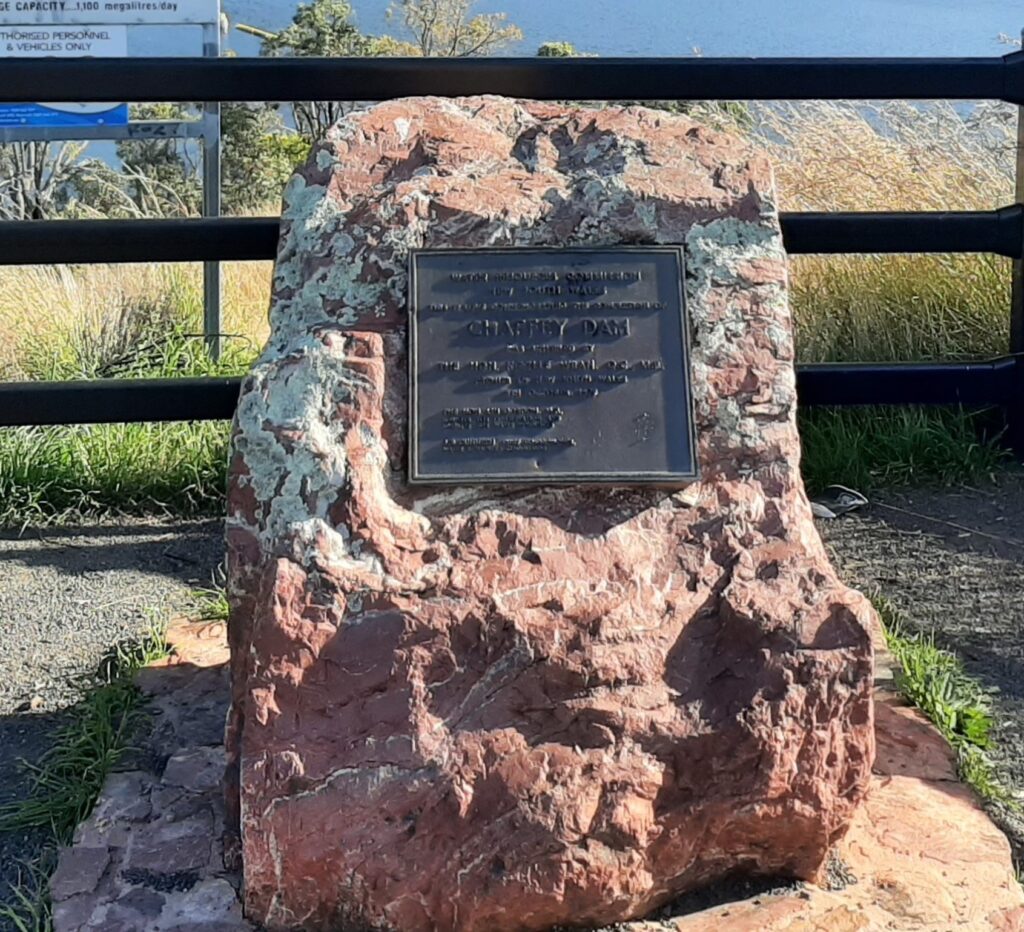
Red-ribbon chert, distinguished by its reddish-brown hue, intricate banding, and rich silica content, is a geological marvel with a fascinating origin. Silica and hematite, the primary minerals comprising this exceptional rock, were sourced from the skeletal remains of minute single-celled organisms that live in the ocean, known as radiolarians (see images on the next page). When plankton die, their organic walls decompose, and their skeletons sink. If they sink below the Calcium Compensation Depth (ranging from 3 to 5 kilometres), all calcium carbonate dissolves and biosilica begins to accumulate on the seafloor, far removed from any mainland river source of sediment. The rock’s composition tells a tale of the rhythmic alternation between quartz-rich chert beds and clay-rich interbeds, showcasing a unique geological history.
Within the radiolarian red-ribbon chert of the Nundle area, unfathomable numbers of radiolarian ‘ghosts’ can be discerned in every sample, alongside the occasional presence of a rare conodont tooth. The term ‘jasper’ is often interchangeably used with chert due to the prevalence of disseminated fine-grained iron oxide. The iron minerals, a result of precipitation from seawater, sink to the ocean floor, seamlessly merging with the silica skeletons of radiolarians.
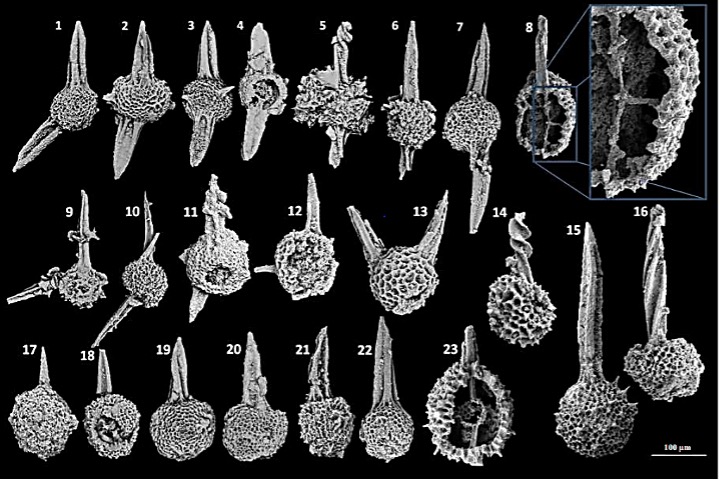
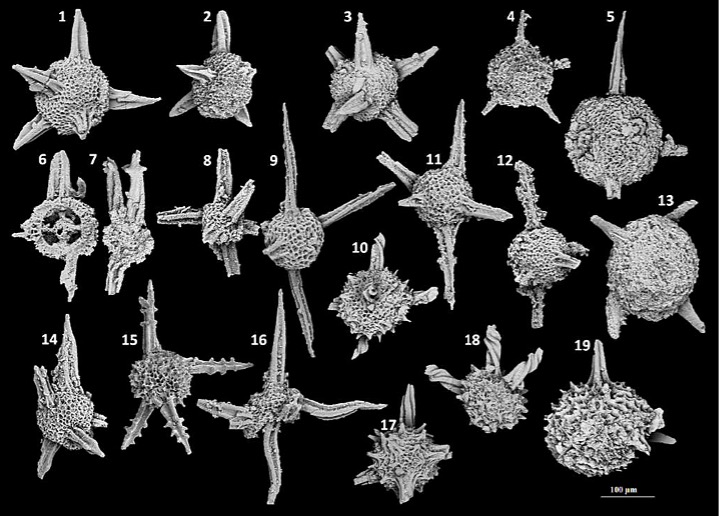
The most impressive part of radiolarian chert from Chaffey Dam is a manifestation of allochthonous processes, which was far away from any sedimentary input derived from rivers on the original Australian continent. It highlights the diversity of rocks that make up the Australian continent. The chert is also often referred to as jasper due to the abundance of disseminated fine-grained hematite which precipitated out of the sea water and sank to the base of the ocean to blend with the silica skeletons.
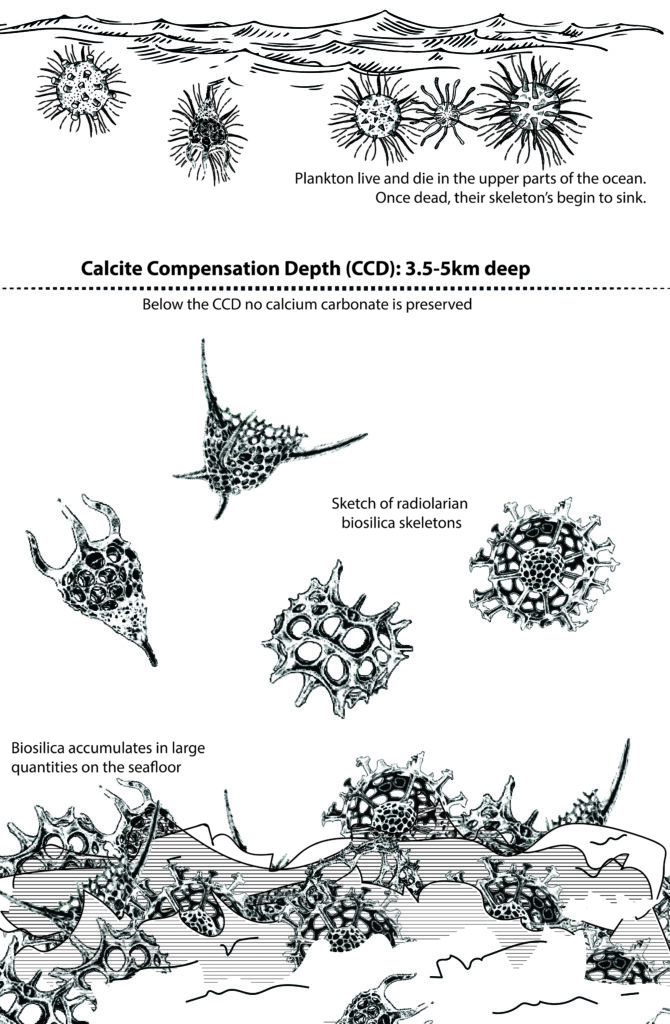
This rock belongs to the Woolomin Group of rocks, which is an elongate belt approximately 10 km wide and 300 km long immediately east of the Peel Fault System. Originally, the material was deposited as soft, flat-lying sediment. Over millions of years (since the Ordovician) these formations were compacted and contorted, and now form an elevated outcrop of highly durable rock.
While this specimen is very important from a strictly scientific perspective, it is also very important for engineering works. The hardness of the chert has made it suitable for the construction of Chaffey Dam, a major geotechnical project completed in 1979. In order to provide sufficient water for the city of Tamworth and surrounds, and to meet modern safety requirements, the dam was raised in 2016 by 8 m to its current height of 62 m. The length of the dam is 500 m, and it has a catchment area of 420 km2.
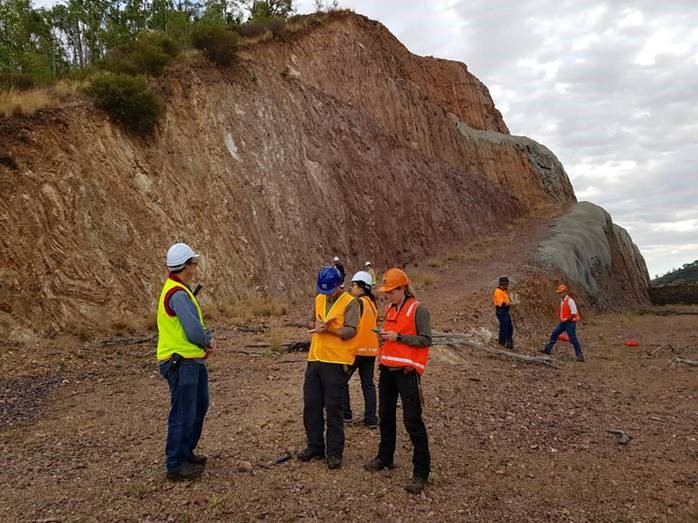
The chert’s physical properties also play a crucial role in the material culture of Australian Aboriginals, especially for the Gamilaroi Group and Anaiwan history in the region. Renowned for its hardness and conchoidal fracturing properties, Aboriginal communities utilised chert extensively for crafting tools and weapons. The exceptional flaking qualities of chert made it ideal for producing sharp-edged blades, spearheads, and cutting implements essential for daily activities such as hunting, woodworking, and food processing. Read more in the Chaffey Dam Aboriginal Cultural Heritage Assessment: https://www.waternsw.com.au/__data/assets/pdf_file/0003/118074/Chaffey-EIS-Appendix-9.pdf.
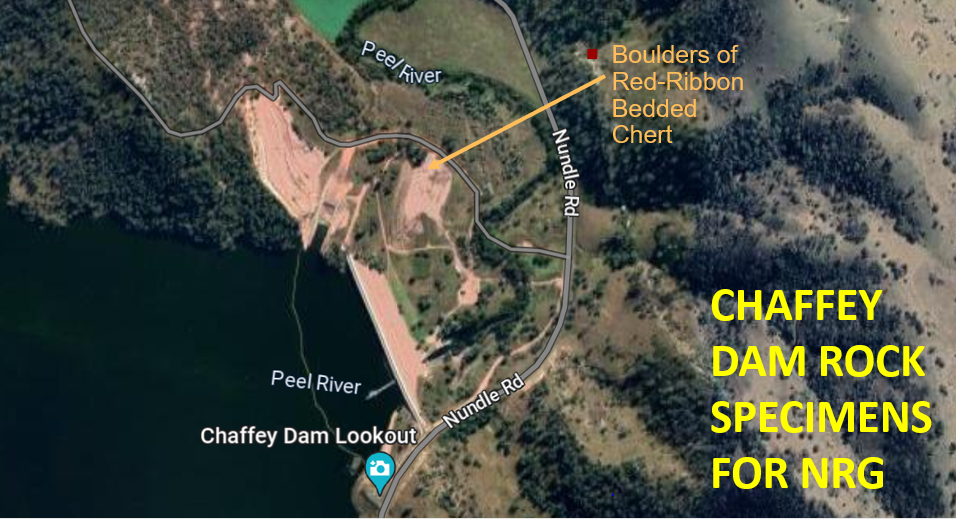
During August, Mike Smith and Dr Paul Ashley visited the site in the company of the site manager from SydneyWater. There are around 15 boulders estimated at 1–5 t in the western cluster of large rocks, all of which are accessible to a crane truck, such as used for other NRG rock movements. Many of these boulders would be suitable for the NRG. There are eight good-size boulders located in the centre of the broad dump of much smaller fragments, most of which would also be very suitable for the Garden (see an example in photo below). The Sydney Minerals Exploration Discussion Group (SMEDG) has agreed to fund the transportation of three specimens and their preparation for display.
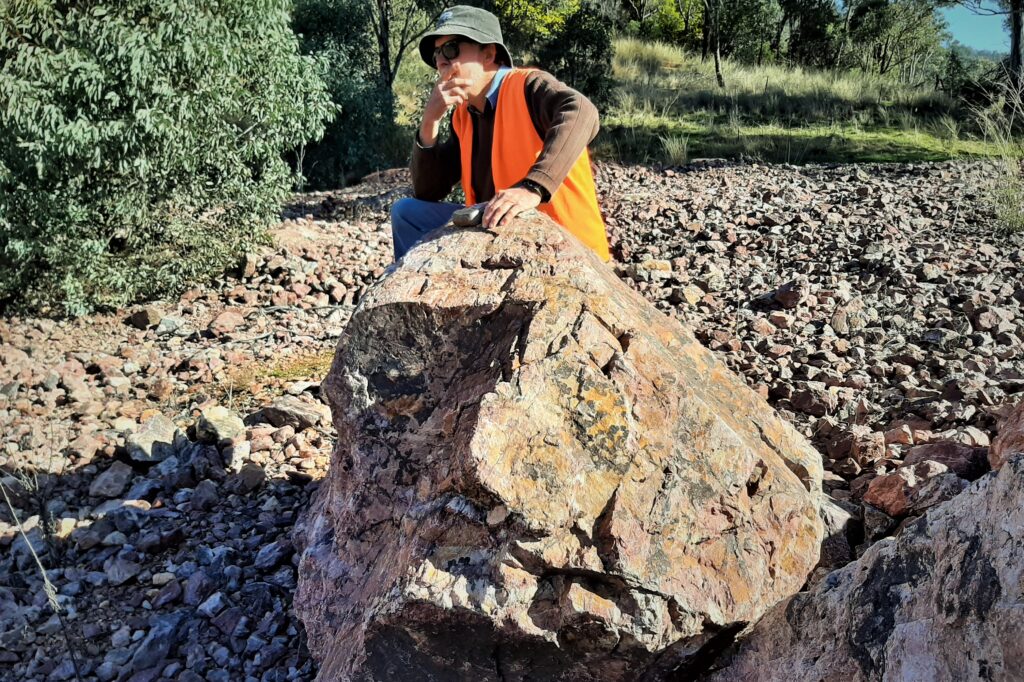
The attributes of the Chaffey Dam specimens which favour acquisition for geoscience education at the National Rock Garden include:
- these are physically resistive, highly siliceous chemical and biogenic sediments, within which the pervasive presence of up to 10 to 20% iron give the rocks a rich red colour.
- original bedding is locally preserved in many blocks of rock which is a critical attribute to display.
- deformation of the sedimentary layers is often observed as local mesoscopic folding, as well as fracturing and veining.
- wide veins of remobilised quartz (up to 5 cm thick) provide a white contrast to the general red appearance of the rocks.
- at a much finer scale, many blocks contain intense micro veining of black minerals (oxides of Fe plus Mn), which adds interesting character. These rocks are a mixture of chemical sedimentary and biogenic sedimentary material and may contain a very diverse range of radiolaria species (Kachovich, 2013). Radiolaria can be observed with a 20x hand lens.
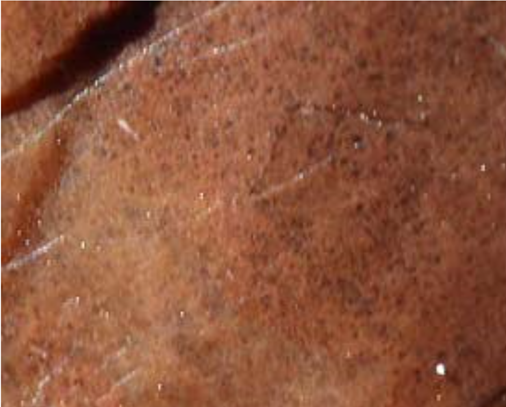
References
Government of New South Wales, 2023. Chaffey Dam. https://www.nsw.gov.au/visiting-and-exploring-
nsw/locations-and-attractions/chaffey-dam. Last accessed: 11 December 2023.
Kachovich, S., 2013. Significance of radiolarian biostratigraphy of the southern New England Orogen, New South Wales, Honours Thesis, Faculty of Science, Medicine & Health, University of Wollongong Research Online. https://ro.uow.edu.au/thsci/48


